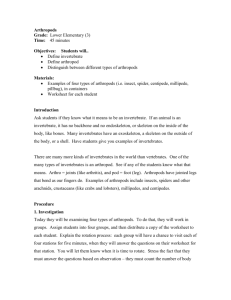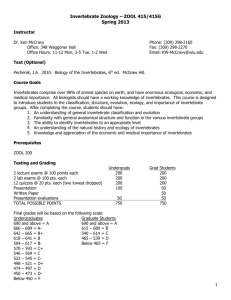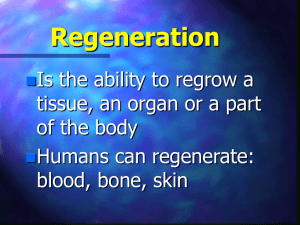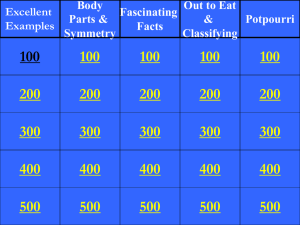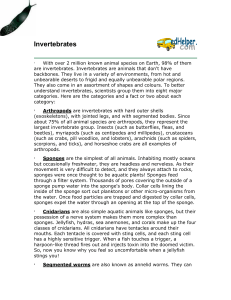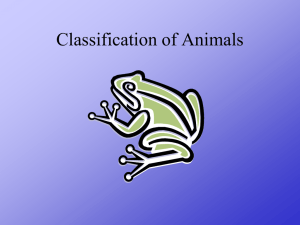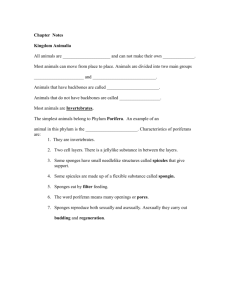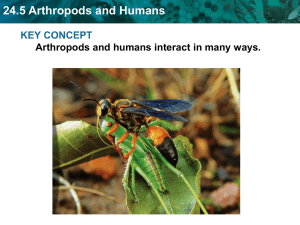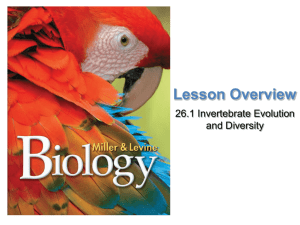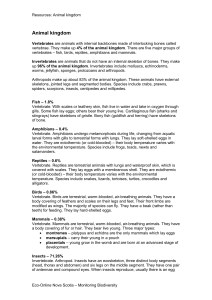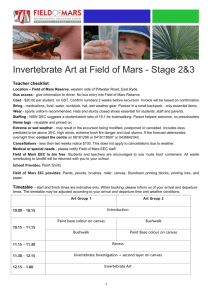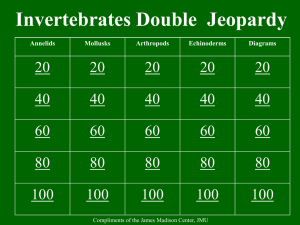Invertebrates
advertisement
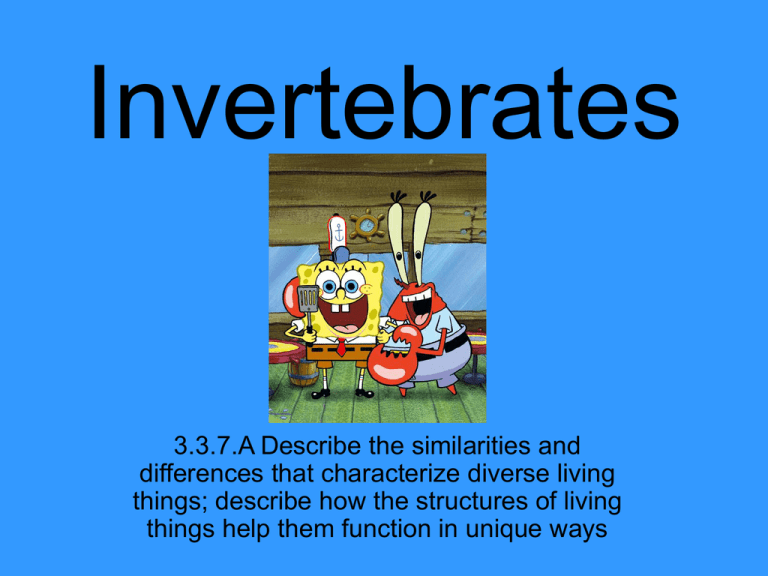
Invertebrates 3.3.7.A Describe the similarities and differences that characterize diverse living things; describe how the structures of living things help them function in unique ways Invertebrate • SPONGEBOB • HEARS • WEIRD • MUSIC • AT • SQUIDWARD’S Definitions • • • • Invertebrate – Animal without a backbone Vertebrate – Animal with a backbone Regenerate – Regrow missing part Scavenger – Animal that eats dead animals • Parasite – Animal that lives inside and harms other animals • Molting – Shedding skin Sponges • • • • • • • Simplest invertebrate Pores No nervous system No complex organs Live in water Can regenerate Uses: Uses: • Washing • Painting Examples: • Freestanding • Encrusting Hollow-Bodied • Hollow center and one opening • Live in water • Look like plants • Attach to rocks • Some float or swim • One large opening or mouth • Mouth makes them more complex than sponges • Tentacles • stingers Examples: •Sea Anemone •Jellyfish •Coral Uses: •Jewelry •Decoration Worms • Soft bodies • Three groups – flatworms, roundworms, segmented worms • Regenerate • Some live in water, some on land, some inside the bodies of other animals (called parasites) • Some are scavengers (eat dead animals) • Complex organs Uses: • Fishing • Good for Soil Examples: • • • • Earthworm Tapeworm Planarian Roundworm Mollusks • Invertebrates with soft bodies • Have shells • Shells provide protection • Some live in fresh or salt water • Some live in moist places on land • Special organs for moving, breathing, getting food, and pumping blood • Footlike part for moving, digging, and feeling Uses: • Food • Decoration Examples: • • • • • • Mussels Oysters Clams Snails Octopus Squid Arthropods • Largest group of animals (75% of all animals) • Exoskeleton (outside skeleton for protection) • Live in water and on land • Some fly • Special body parts for special jobs • Molts • Jointed legs • Body sections, 3 or 4 pairs of legs • Bilateral Symmetry Uses: • • • • Food Pets Entertainment Pest Control Examples: • • • • Lobster Grasshopper Spider Tick Spiny-Skinned • Sharp spines on the outside of their bodies. (Protection) • Tube Feet – Tiny, suctionlike cups used for moving, feeling and feeding. • Regenerate • Many characteristics of adult spiny-skinned animals are not as complex as arthropods, but young spiny-skinned animals are more complex than young arthropods. Uses: • Food • Decoration • Collecting Examples: • • • • • Sea Cucumber Starfish Sea Urchin Sea Star Sand Dollar
